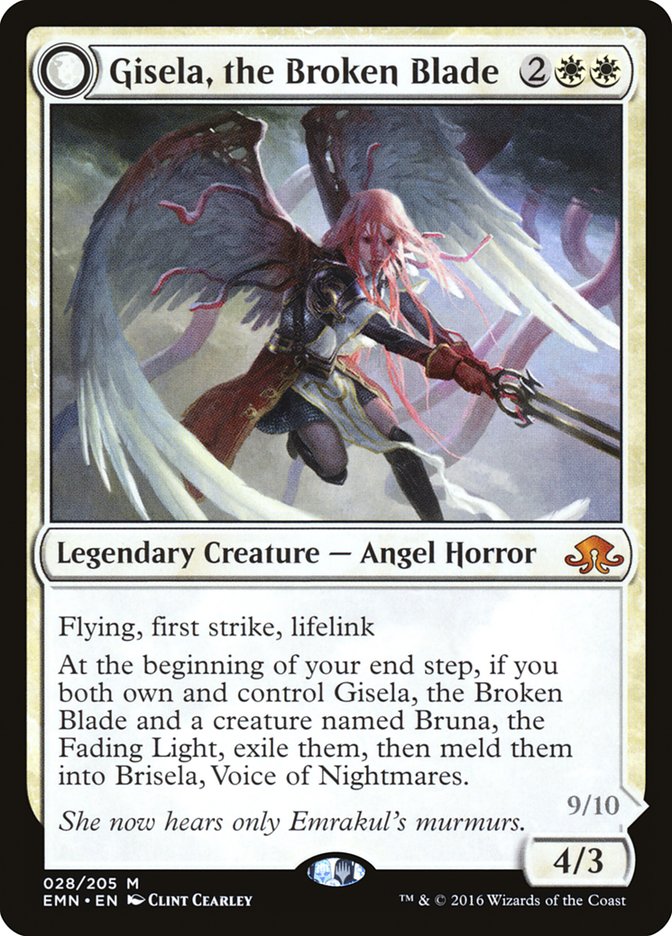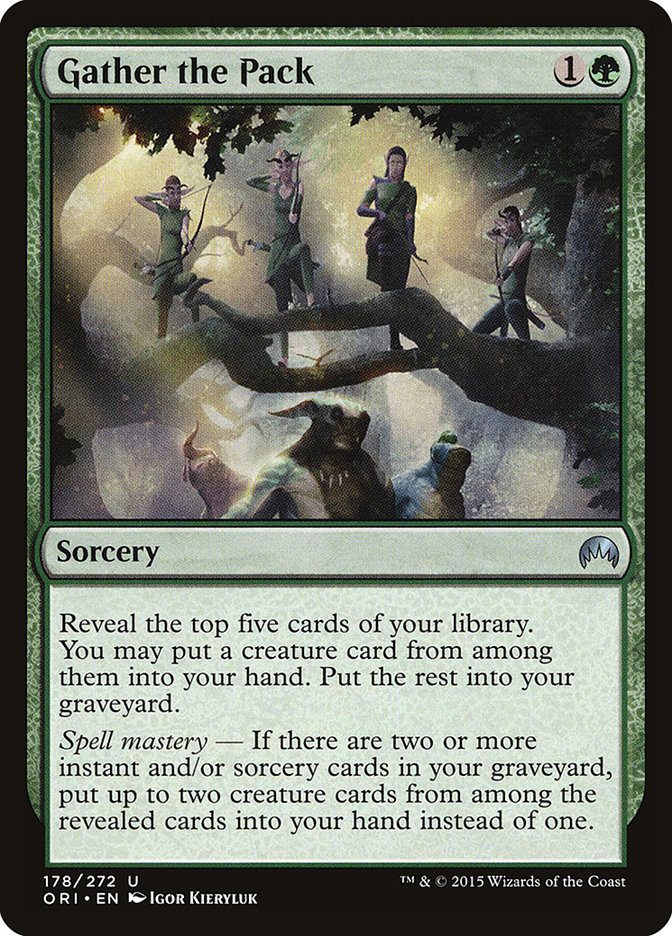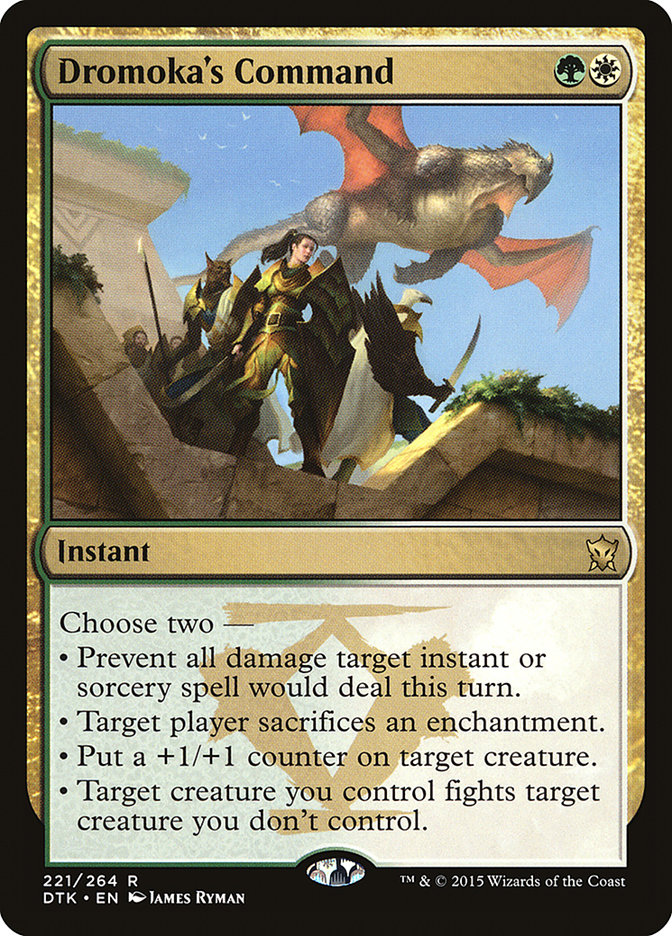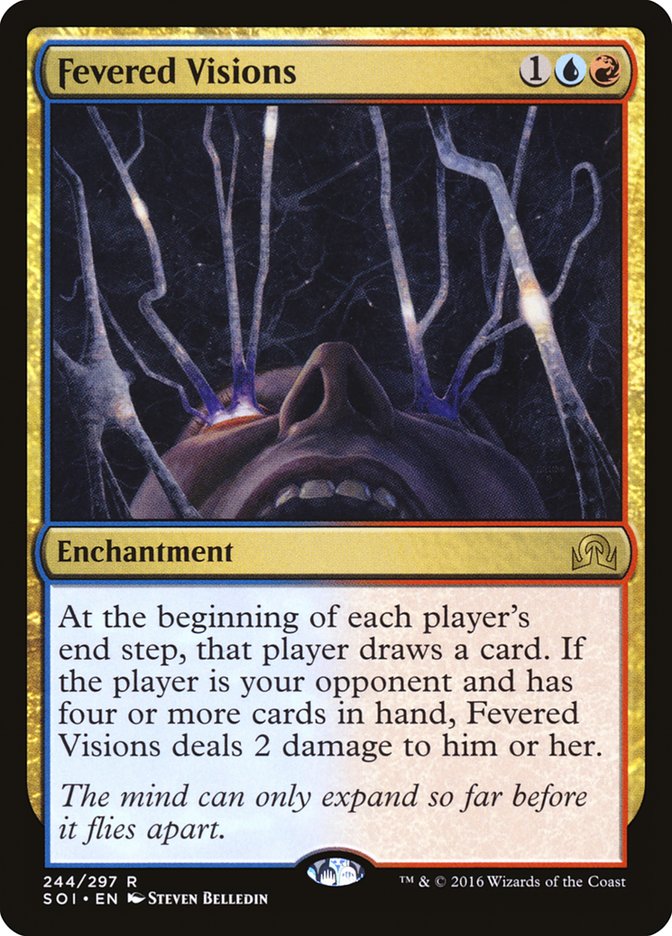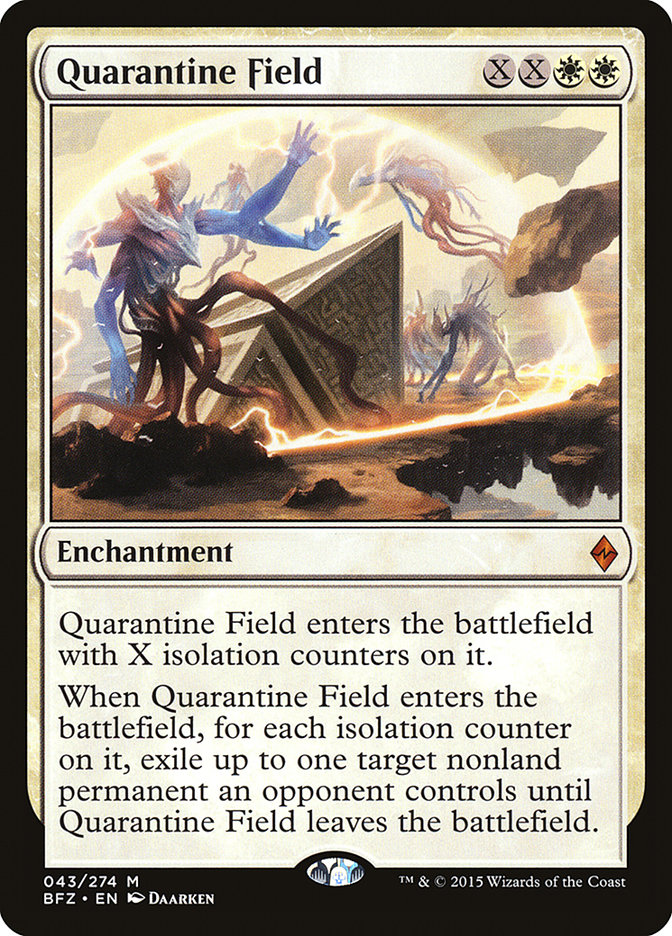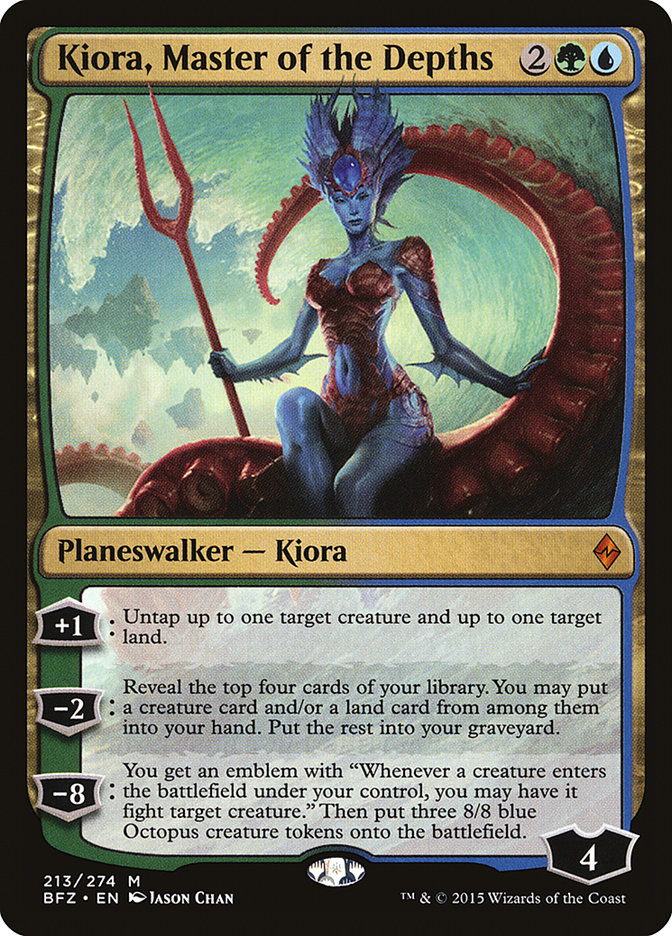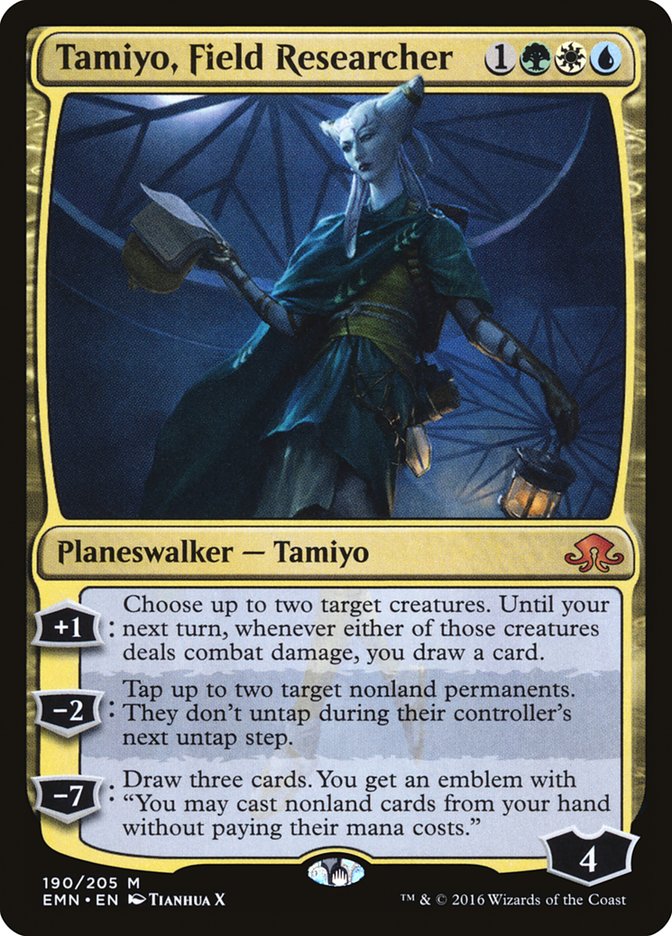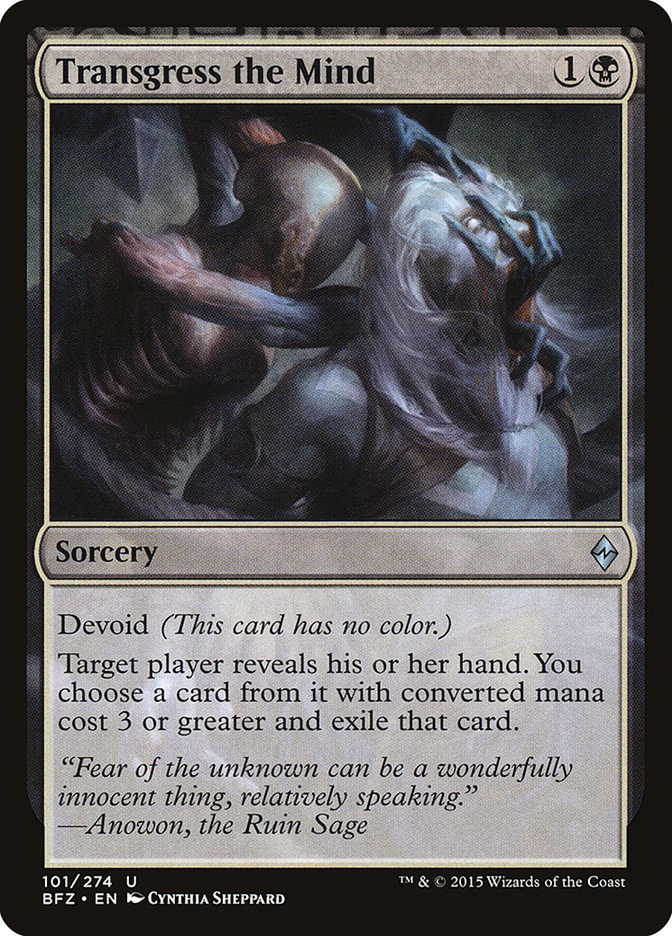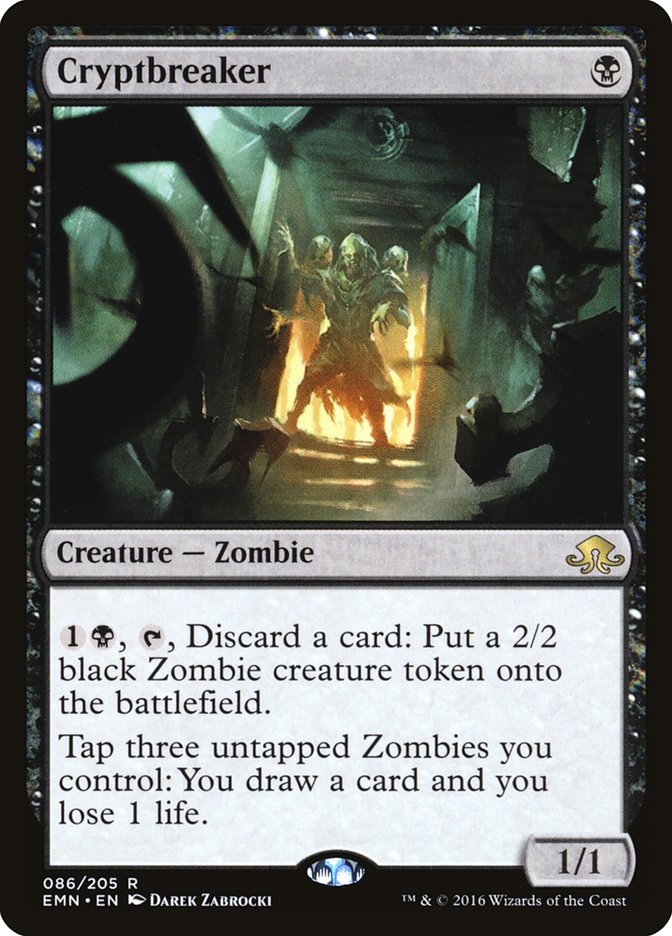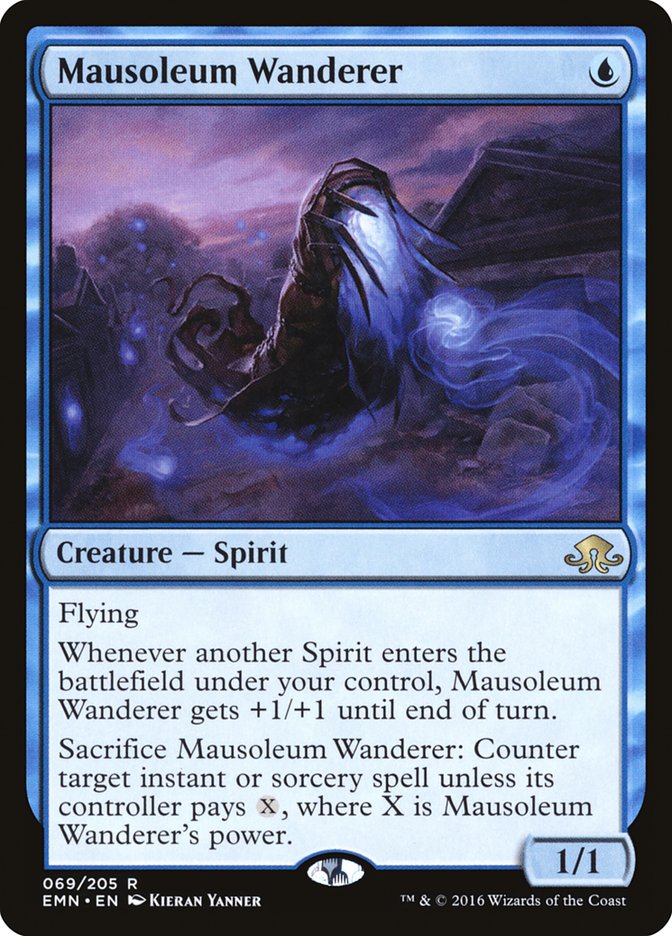With the current Standard format winding down and with only #SCGRICH and the Classic at #SCGORL remaining, all eyes are turning to Kaladesh and how that will change the landscape of the new Standard format. I am always excited for new cards, but I have my eyes on some cards that are certain to be all-stars after the ones keeping them down rotate out.
For Team East West Bowl, our Pro Tour testing process focuses a lot on playing as many games as possible with the new cards to get a “feel” for them. It is imperative to identify what is new and good, but figuring out how those cards translate into the previous Standard format is the true recipe for success. That has been our baseline for finding decks such as U/R Thopters at Pro Tour Magic Origins, U/R Eldrazi at Pro Tour Oath of the Gatewatch, and Temur Emerge at Pro Tour Eldritch Moon.
The card whose full potential I am most excited about seeing is Gisela, the Broken Blade.
At the inception of this Standard format I was infatuated with Team East West Bowl’s version of B/W Angel Control that I built.
Creatures (10)
- 2 Ayli, Eternal Pilgrim
- 1 Linvala, the Preserver
- 2 Bruna, the Fading Light
- 3 Gisela, the Broken Blade
- 2 Thalia's Lancers
Planeswalkers (3)
Lands (26)
Spells (20)

This version was different from the one that popped its head up occasionally on the SCG Tour® as it focused more on early plays like Ayli, Eternal Pilgrim and Collective Brutality. It was fairly good against everything we threw against it in the early stages of the format due to its high card quality, but as we learned more about the format, the synergy-driven decks started to overpower our B/W version.
We also made a mono-white and colorless version that was more all-in on the ramp aspects of getting to Gisela, the Broken Blade and melding her with Bruna, the Fading Light. It also could freely play Thought-Knot Seer and Eldrazi Displacer with easy access to colorless mana from the painlands and Hedron Crawler.
Creatures (30)
- 4 Knight of the White Orchid
- 1 Anafenza, Kin-Tree Spirit
- 1 Linvala, the Preserver
- 4 Eldrazi Displacer
- 4 Thought-Knot Seer
- 4 Hedron Crawler
- 2 Archangel Avacyn
- 1 Odric, Lunarch Marshal
- 2 Bruna, the Fading Light
- 3 Gisela, the Broken Blade
- 2 Thalia, Heretic Cathar
- 2 Thalia's Lancers
Lands (26)
Spells (4)

This deck is different from anything we have seen in current Standard, combining the old-school Mono-Red Eldrazi deck with the Angel package. We went deep, adding tons of bullet legends which synergize with Thalia’s Lancers, and having access to a lot of options was very powerful. There are a lot of strong interactions going on with Eldrazi Displacer and Thalia’s Lancers as well as Odric, Lunarch Marshal and Gisela, the Broken Blade.
Overall I liked the Bant Company matchup against both versions of Angels, but sometimes I lost even after assembling Brisela, Voice of Nightmares. They always had the out of Collected Company into Reflector Mage. It may seem small, but when the deck you are gunning for can still beat you after landing the trump card (or two cards put together), you might have to go back to the drawing board.
The biggest thing that kept our Angels deck grounded was the Temur Emerge deck that I piloted to the Top 8 of Pro Tour Eldritch Moon. In games against Angels, Elder Deep-Fiend could tap Brisela, Voice of Nightmares and double Flashback Kozilek’s Return to slay her, and then the infinite lockout engine punished the sorcery-speed-heavy deck. Post-rotation, Temur Emerge loses essential pieces to its engine, such as Jace, Vryn’s Prodigy and Gather the Pack. The losses of those cards damages its ability to repeatedly cast Elder Deep-Fiend and abuse Kozilek’s Return.
Moving Forward into Kaladesh Standard, both Angel decks only lose a few role-players and maintain their core engine of Gisela, the Broken Blade; Thalia’s Lancers; and Bruna, the Fading Light. But they benefit most from the loss of Collected Company; Jace, Vryn’s Prodigy; and Gather the Pack. In the early stages of a format, I normally lean on cards that are inherently powerful rather than synergy-based decks. Looking far ahead to #SCGINDY, I would recommend battling with some Angels and making giant cards.
Rather than a single card, I want to talk next about a type of card: enchantments. With Bant Company being the dominant deck for most of the format, it has been difficult for enchantments to shine. Dromoka’s Command being so versatile made it an easy four-of in Bant Company. With such a large portion of the metagame having access to four copies of a cheap way to interact, having an enchantment in your deck was a liability. But the rotation is near, and with Dromoka’s Command leaving, we are sure to see more enchantments on the horizon. I anticipate seeing a shift towards powerful enchantment-based removal such as Stasis Snare and Quarantine Field.
The deck that benefits most from the rotation of Dromoka’s Command is U/R Thermo-Alchemist. All modes of Dromoka’s Command are relevant, countering a burn spell, removing a Thermo-Alchemist, or removing a crucial Fevered Visions. Moving forward in a world without Collected Company and Dromoka’s Command, U/R Thermo-Alchemist looks to be a scary deck as the format slows down. My only concern with U/R Thermo-Alchemist down the line is that it is easily hated out in the sideboard. Cards like Peace of Mind, Call the Bloodline, and Noose Constrictor do not rotate and are excellent tools for beating an active Fevered Visions.
The next card type that will improve drastically with the rotation of Collected Company is planeswalker. Traditionally, the design of planeswalkers is that they protect themselves at sorcery speed. Unfortunately, most of that is invalidated by the instant-speed nature of Collected Company. Gideon, Ally of Zendikar fell heavily out of favor as Bant Company rose to the top of the metagame, but since Bant will most likely play more of a sorcery-speed game post-rotation, Gideon, Ally of Zendikar can have his time to shine.
The next planeswalker to jump in value is Kiora, Master of the Depths. As I said earlier, the Temur Emerge engine takes a big hit from losing Jace, Vryn’s Prodigy and Gather the Pack. These cards are critical for self-milling, card selection, and card advantage. Although Kiora, Master of the Depths costs more, she can fill all of those roles successfully and potentially more. There could be a shift to where the Temur Emerge decks can play more of a midrange game and Kiora, Master of the Depths is a perfect fit for that.
Another planeswalker we will see much more of is Tamiyo, Field Researcher. There is no denying Tamiyo, Field Researcher is a powerful Magic card, but her slot at four mana in a Bant deck was always taken up by Collected Company. She had always been relegated to the sideboard for specific matchups, but now I think she has the potential to be an all-star in the maindeck.
In preparation for Pro Tour Eldrich Moon, East West Bowl made a Bant deck focusing on Tamiyo, Field Researcher rather than Collected Company.
Creatures (22)
- 2 Nissa, Vastwood Seer
- 4 Reflector Mage
- 4 Sylvan Advocate
- 2 Archangel Avacyn
- 4 Tireless Tracker
- 2 Thalia, Heretic Cathar
- 4 Selfless Spirit
Planeswalkers (7)
Lands (25)
Spells (6)

Another type of card that will improve when Kaladesh hits Standard: counterspells. In the same vein as planeswalkers, most counterspells were held back by the instant speed of Collected Company. Theoretically counters are best when trading resources favorably on your opponent’s turn. Collected Company allows a player to force the issue on the opposing player’s turn. Most traditional control decks were pushed out of the metagame because of their inability to effectively answer instant-speed threats. As the format will come to be defined more by high-impact sorcery-speed threats, counterspells will become the cleanest, most sought-after answers.
Sometimes in life, the rich get richer. I believe this to be true with Transgress the Mind. While Transgress the Mind is already a staple card in Standard, the ceiling has yet to be reached. Transgress the Mind functions similarly to counterspells in that you are able to trade one for one with cards would otherwise be difficult to answer cleanly. The added bonus of exiling will be relevant because of the prevalence of Liliana, the Last Hope and her ability to get back pivotal cards from the graveyard. There is also a lot of powerful synergy with Wasteland Strangler that is relatively unexplored deckbuilding space. Transgress the Mind will also be the premier hand disruption spell, as both Duress and Infinite Obliteration are rotating out of the format.
One last thing that drastically improves with the rotation of Dragons of Tarkir and Magic Origins: creature strategies. They improve mostly because of Reflector Mage (or Reflector Mage) not being able to come out at instant speed from Collected Company. The Reflector Mage, Collected Company combo is so hostile towards creatures that it kept most linear creature strategies at bay. This could open the door for a host of creature decks such as Werewolves, Zombies, or Spirits to dominate the new Standard.
As we say goodbye to this Standard format, I am going to be sad to see it go. It will definitely go down in history as one of the most challenging Standards to play in history. All of the games were interactive and full of substance. I had a great time playing such mentally taxing decks as it definitely forced me to become a stronger player. This weekend at #SCGRICH is sure to be great, as it is the culmination of all of the hard work that many players have put into this format.


